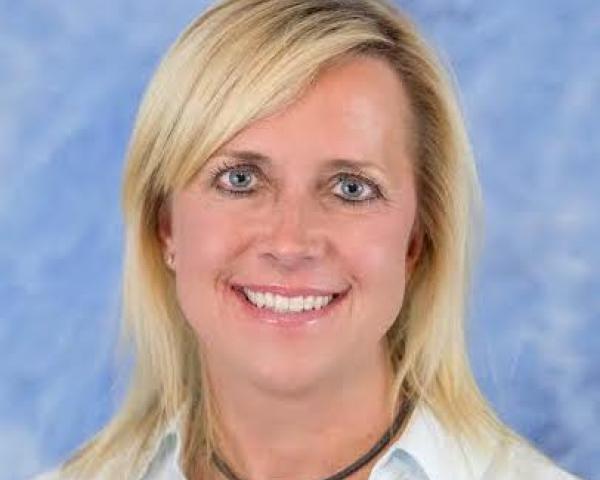Advanced planning and preparation, strategic global thinking, shifts in legislative landscapes and sound technology investments are on the minds of most industry leaders as we move into 2018. As an extension of its own thought leadership program, Sedgwick has identified key trends that are likely to affect risk management and benefit decisions in the coming year.
To stay on top of issues that may affect our clients and industry partners throughout the year, we took a close look at internal research and colleague observations, external exploration and employer discussions and in-depth market monitoring of current and emerging risks. We will continue to watch and offer our projections on these potentially defining movements, classified into five categories:
- Compounding global risks
- Shifting tide of policy
- Bridging the gaps
- Leveraging interdisciplinary care
- Improving experience through technology
Compounding global risks. An unusually high number of natural disasters in 2017 underscored the need for organizations to have a strong disaster recovery plan in place. Establishing strategic partnerships that can support an effective business continuity plan is critical. Preparation and action must occur before, during and after a catastrophe if an organization is going to recover and resume operations in a timely manner.
Additionally, the continuing threat and prevalence of emerging risks are expected to push the boundaries of organizational resources and resiliency. Cyber threats like data intrusion and ransomware are evolving and multiplying as the global economy becomes increasingly connected. As we continue to see terrorism, both international and domestic, in the headlines, it underscores the need to prepare and protect our people and property.
During these turbulent times, society’s reliance on first responders as a line of defense against risks of all types becomes even more critical. Caring for first responders’ overall physical and mental health is one way communities and businesses can increase preparedness for debilitating crises. Several states have taken up legislation aimed at increasing coverage for first responders. Organizations can anticipate that, as coverage grows, so will the need for specialized claims, managed care and disability services.
See also: Industry Trends for 2017
Shifting tide of policy. Businesses can look for leave programs to expand in response to demand from their own employee populations, faced with the need to care for their own health and the welfare of their families. Parental leave, caregiver leave and other paid leave programs are on the rise; several states have already introduced new family-friendly paid leave bills, and others are clarifying and expanding regulations for leave benefits. This trend is expected to continue as the population shifts.
More than ever, vigilance is needed for employers to maintain compliance with continuing changes in the Americans with Disabilities Act, Family and Medical Leave Act and other connected federal, state and municipal laws. Throughout 2018, organizations can expect regulatory complexity to increase and fines and litigation to be a looming threat for non-compliance. Many organizations are facing policy changes and compliance demands with a renewed willingness to collaborate across disability, leave of absence and workers’ compensation teams.
It is impossible for organizations not to feel the impact of the prescription drug crisis on their workforces. The costs – personally and financially – of the misuse and abuse of opioids place undue burdens on society. Governmental agencies, pharmacy retailers and employers continue to look for ways to take back control through such means as legislation, drug formularies and first-fill limitations.
Bridging the gaps. Throughout 2018, organizations will seek new ways to bridge gaps in knowledge and services based on evolving needs and preferences of consumers. Organizations are joining in the race toward on-demand, self-service innovation to provide immediate resources to those in need. The infusion of machine learning and artificial intelligence is advancing many capabilities by automatically sifting through mountains of data, allowing service providers to detect patterns faster and formulate valuable insights to improve the quality of the customer experience.
Organizations are also seeking new ways to bridge diversity gaps. Different generations and populations have different needs when considering health concerns, technology, communication preferences and resources. We must address changing demographics within the workforce and determine how to better adapt practices to accommodate and support differences.
Focusing on the claims industry specifically, insurance carriers, third party administrators and self-administered employers must broaden the knowledge and capabilities of today’s claims professional. As seasoned professionals begin to retire, bridging the talent gap becomes increasingly important. Training of claims professionals must expand beyond the traditional claims process. Claims organizations must look holistically at how examiners are addressing the needs of their clients and consumers and how their part in the process affects the bigger picture.
Leveraging interdisciplinary care. The movement toward a whole health approach increases trust and engagement and places less influence on individual providers in favor of a more holistic, consensus view of treatments and interventions. As more employers embrace principles of advocacy, empathy and responsiveness, they are using centralized support to link teams and resources with a common focus on quality care. With this shift, organizations look forward to continued improvement in the consumer experience and stronger physical, emotional and financial health for employees.
We are seeing more businesses embrace integrated programs as a means to address the shared challenges of healthcare, return to work and compliance. In addition, the importance of data connectivity within organizations and across providers will grow as organizations work to avoid information gaps, optimize care and avoid potential dangers.
Interdisciplinary cooperation is also important as a means for exploring alternatives for pain management. Organizations can anticipate more collaboration between employers, physicians, claims specialists and patients as they move away from long-term drug prescriptions, looking instead toward alternative therapies and weaning techniques to help injured workers regain their health and productivity without the risk of addiction.
See also: 3 Technology Trends Worth Watching
Improving experience through technology. Technology helps employers engage workers throughout their recovery, maintaining a stronger connection while they are away from work and making the process easier for them to understand. Better communication and improved access to on-demand care can help improve the claims experience, and increased consumer satisfaction is leading to accelerated outcomes and better overall health.
Telemedicine and other remote access offerings are still on the rise and evolving as other “tele” services are added to the mix. Eliminating some of the barriers of distance and time, these resources are connecting patients with the right providers for initial and follow-up treatments for minor injuries and illnesses, as well as support resources throughout the claims process. Chatbots and avatars are becoming more prevalent as support and service options for all lines of business. The industry is even seeing potential for these tools as virtual health coaches for workers’ compensation, disability and wellness programs.
Employers can also expect to see the claims industry reach the next level of decision optimization and use technology to deploy intervention strategies in real time. Analytics will influence next-generation methods for addressing all types of claims and be used to predict those that will become complex or incur large liability losses, anticipating care and pharmacy needs, prescribing appropriate steps toward resolution and facilitating return to work.
While the year ahead may bring challenges, it also brings a renewed sense of hope and excitement. As these and other trends materialize and develop, those who have anticipated and planned ahead will be in a position to capitalize on opportunities as they arise. Sedgwick will continue to guide our clients and the broader industry by tracking topics and trends like these that may affect employees, customers and businesses.
To read more, visit
Sedgwick’s Navigating 2018 webpage.






